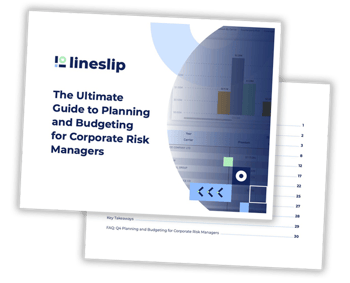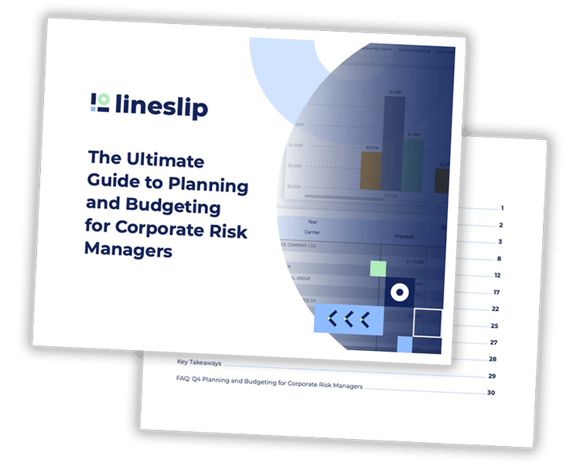The Ultimate Guide to Planning and Budgeting for Corporate Risk Managers

Planning and budgeting for corporate risk management can feel like navigating uncharted waters. With risks evolving and insurance costs fluctuating, how can you confidently allocate resources, align with corporate goals, and prepare for the unexpected?
The Ultimate Guide to Planning & Budgeting will give you the process framework you need for more effective yearly planning.
Download our free guide
Download the guide
Take Control of Your Planning Process

Discover actionable insights, including:
- How to align risk management goals with corporate strategy
- Tips for engaging stakeholders and securing budget approval
- Strategies to optimize spending while improving risk outcomes
Corporate Risk Management
Learn how LineSlip provides risk management solutions that impact the bottom line while creating efficiencies for growth.
What you’ll discover in this Budgeting & Planning Guide for Risk Managers
✺
Step-by-Step Budgeting Process
Learn how to define objectives, analyze historical data, forecast premiums, allocate resources, and secure stakeholder buy-in.
✺
Advanced Forecasting Techniques
Explore proven methods to anticipate insurance premium changes and manage administrative expenses.
✺
Resource Allocation Strategies
Prioritize your risk management initiatives to maximize impact and align with organizational goals.
✺
Key Performance Indicators (KPIs)
Leverage metrics like Total Cost of Risk (TCOR) to measure and optimize your risk management efforts.
✺
Integration of Technology
Understand how AI-powered solutions and risk management software can streamline your planning, save time, and reduce costs.
✺
Simplified Best Practices
This guide simplifies the complex world of insurance budgeting. It highlights best practices and strategies to avoid common pitfalls.